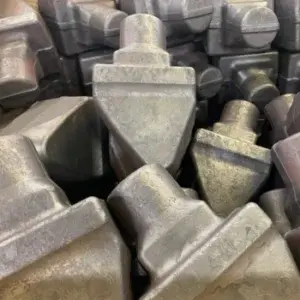3 min read
Unlocking the Strength: The Importance of Heat Treating
 Southwest Steel Processing
:
July 5, 2023
Southwest Steel Processing
:
July 5, 2023
.jpg)
Heat treatment is a specialized process that involves precisely controlled heating and cooling of metals and metal alloys to modify their crystalline structures. This process is widely used in metal fabrication to enhance the hardness, temperature resistance, ductility, and overall strength of materials.
Here are some key points to keep in mind as you delve into the world of heat treatment:
Heat treatment can be used to improve the strength, hardness, and durability of materials.
Different materials require different heat treatment techniques. For example, annealing is used to soften metals, while quenching is used to harden them.
Heat treatment can also be used to alter the electrical and magnetic properties of materials, making it an important process in the manufacturing of electronic devices.
Understanding the science behind heat treatment is essential for achieving consistent results and avoiding defects in the final product.
With the right equipment and expertise, heat treatment can be used to produce materials with highly specific properties, making it a powerful tool in the hands of skilled engineers and scientists.
One of the benefits of heat treatments is that it does not change the shape of the product, making it an essential aspect of metal fabrication processes.
Different Methods of Heat Treatment
Heat treating is a critical process in the manufacturing industry. It involves heating and cooling materials to alter their physical and mechanical properties. This process can make the material more durable, strong, and resistant to wear and tear. Here are some heat treating techniques that you should know about to unlock the power of heat.
- Annealing: The annealing process involves heating a material to a specific temperature and then allowing it to cool at a gradual rate. The goal is to relieve any internal stresses and make the material more ductile.
- Tempering: After hardening the material, the tempering process is done to improve toughness and reduce brittleness. This technique involves heating the material to a specific temperature and then cooling it in air or oil.
- Quenching: This technique involves heating the material to a specific critical temperature and then cooling it rapidly. The goal is to harden the material and make it more resistant to wear and tear.
- Normalizing: This technique is similar to annealing, but the cooling process is faster. The goal is to make the material stronger and more ductile.
Stages of Heat Treatment
Heat treatment is a process used to alter the mechanical and physical properties of materials, such as metals and alloys. Understanding the various stages of the heat treatment process is crucial to achieving the desired results.
Overall, understanding the stages of heat treatment and how they affect materials, depending on the type, is essential for anyone working with metals and alloys.
Here are stages involved in heat treatment:
- Heating: This is the initial stage of heat treatment. The temperature is determined by the material being treated and the desired outcome. For example, heating a metal to a high temperature can make it easier to work with, while heating it to a lower temperature can increase its strength.
- Soaking: Once the material has reached the desired temperature, it needs to be held at that temperature for a specific period of time. This is known as soaking, and it allows the material to reach a uniform temperature throughout.
- Cooling: Once the material has been soaked, it needs to be cooled down. There are different cooling methods, including air cooling, oil quenching, and water quenching. The cooling rate and method used depends on the material being treated and the desired outcome. The rate of cooling can affect the final properties of the material, so it is important to control this carefully.
- Tempering: This is an optional stage that is sometimes used to improve the toughness of the material. The material is heated to a lower temperature than in the initial heating stage and then cooled down again.
Overall, understanding the stages of heat treatment is crucial in ensuring that the material being treated is transformed in the desired way.
Internal Heat Treatment Capabilities for Your Forged Components
We're proud to offer in-house heat treatment capabilities to transform your forged components accurately and efficiently so that they meet the mechanical and physical requirements of your specific industry or application.
This will save you time and money by eliminating the need for an additional supplier to handle heat treatment. Our services include normalization, quenching and tempering, annealing, and induction hardening.
Our team is highly skilled and equipped with state-of-the-art technology to provide precision heat-treating services for your components.
To find out more about or high-volume forging capabilities contact us today to talk to our experienced sales team.
.webp?width=460&height=66&name=logo%20(1).webp)



